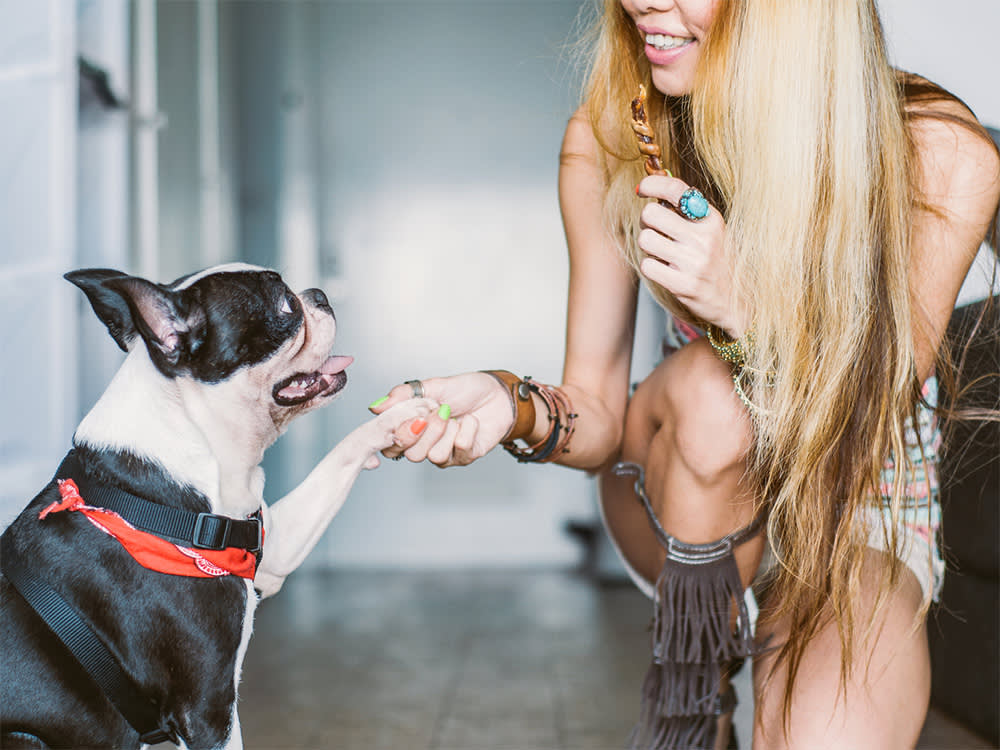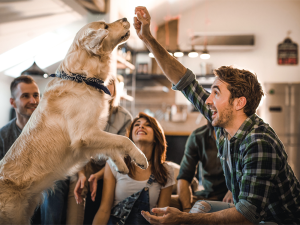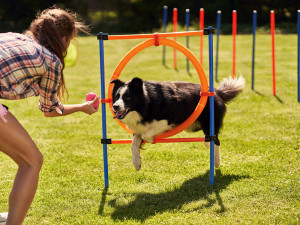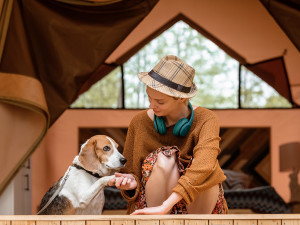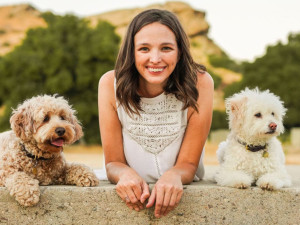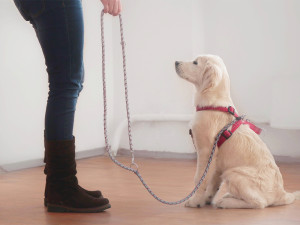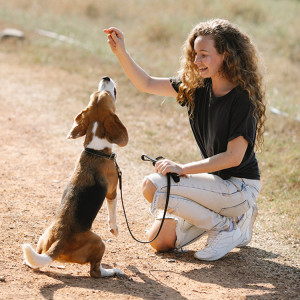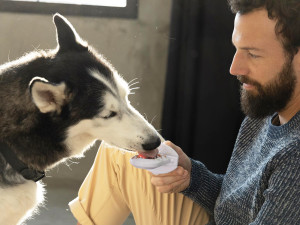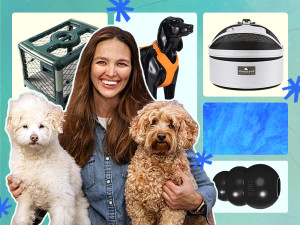What’s the Point of Trick Training?
It turns out, “shake” is good for more than just impressing other dog parents.
When it comes to training, some of the cues your dog can learn are actually fun. Outside of being adorable, teaching your dog to spin in a circle, dance, give high fives, and so much more can actually have a purpose in training.
Some of my clients think it‘s silly when I suggest we teach their dogs a few “tricks.” After all, they just want a confident, happy dog; they don’t need Fido skateboarding and doing handstands (by the way, these are all tricks my dog can do). In the end, these pet parents are surprised at how often their dogs can use these tricks in everyday life — and they want them to learn more. So, why is it important that your dog can master more than the basic cues of “sit,” “come,��” and “stay?”
A learned trick can help dogs become more confident in exploring new areas, in uncertain situations, or when they may be too excited. Often, when dogs become nervous, they get frozen and stuck. By reinforcing a familiar trick, we get their feet and their brains moving and working.
For example, if a dog is overly focused on another dog, before they bark, I would ask for a “touch” or “watch” and reward that. This diverts their attention to the cue instead of the other dog. Here are three easy tricks I teach dogs of all ages; you can teach them to your dog, too. Get your treats ready.
How much do you spend on your pet per year?
Touch
Start by placing your hand — palm facing your dog — just a few centimeters from your dog’s nose. They will naturally want to sniff and, perhaps, touch your hand. When they do, say “good” and give a reward. Repeat this a few times over the next few days. Once your dog gets this down, it’s time to make it harder. Start by placing your hand to the side of their face and reward when they touch.
If your dog paws, licks, or shakes your hand, just simply remove your hand and try again. This is called “offering.” Your dog is offering other behaviors to see if that may get them the treat. Don’t reward these behaviors. Once your dog is touching each time, begin to say, “touch” when you present your hand and then slowly move your hand further away from your dog. Soon, your dog will be running across the room to “touch.”
Spin in a Circle
I love teaching this to dogs; it’s good for them and loosens up their body as they spin and twirl around. Take your treat, and at nose height, lure your dog, having them follow the treat, in a circle. Once your dog completes the circle, give them the treat. If your dog is not doing a full circle, break it into smaller sections: Reward them even when they start to do the circle. If your dog is jumping up for that treat, your treat is too high; be sure to keep it at the same level as your dog’s nose.
Shake a Paw
A classic. Put a treat in a closed fist and present it to your dog, leave your hand there and be patient. If they lick your hand, just ignore them. If they paw at your hand, give them a treat. Repeat this a few times. When your pup first touches your hand, be sure to reward them right away. Next, try switching to an open hand — palm up — and see if they offer that same paw! You’ll be shaking paws sooner than you know it.
I hope this helps you and your dog get started on trick training and gives you new tools to use in your life together. Get ready to show off some new (and literal) party tricks at your next pup-parent gathering.
